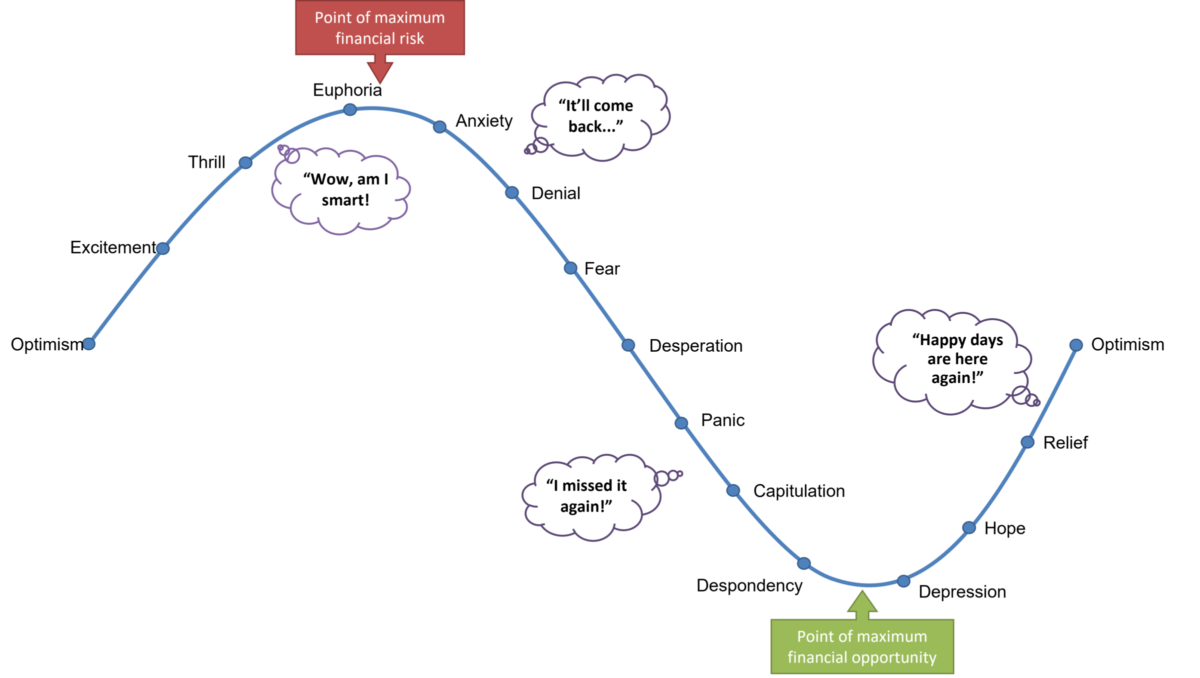There are four major factors that influence a grain marketing plan. These are personal feelings and attitudes about marketing, the financial needs of the farm business, seasonal price patterns, and the current price outlook.
Personal feelings and attitudes about marketing
The first factor is your personal feelings and attitudes about marketing. Each farmer will differ in his or her personal characteristics. Your business goals and objectives will drive the marketing plan. What works for you may not work for another farmer.
You need to identify yourself as a speculator or a risk manager depending on your attitude towards risk.
A speculator can be defined as a person or business who buys or sells futures or options in hopes of making a profit from just the future or options trades. Speculators do not have the commodity to back their futures or options trades. Speculators try to “buy low and sell high” (or vice-versa) to make a profit. Speculation is more like gambling than risk management, but unlike gambling, there is information that can inform decisions.
Risk managers identify actual costs of production and market grain when an acceptable return over production cost is achieved. Most grain farmers will identify themselves as risk managers.
Financial needs of the farm business
The second factor is identifying your financial objectives. Each farm business will differ in its financial needs and ability to meet the financial uncertainties. Farms that have high costs of production should have different marketing plans than those farm businesses that have lower costs of production.
Farmers should review these financial objectives:
- Identify your risk bearing ability, which may also require a financial analysis of your farm business.
- Identify your cost of production.
- Identify your acceptable return over production costs or profit levels.
A marketing plan may take many different forms, but it is important to develop and have a written grain marketing plan. Written plans will guide your actions into the future. Emotions are difficult to suppress without a written plan.
Grain marketing without a plan is like riding on a roller coaster. Fear and greed are powerful emotions that can cause us to experience highs and lows along our journey. See the picture below for more details on the mix of emotions that a farmer experiences when making a pricing decision.
By writing down your marketing plan, you can maintain a history of actions and not let your emotions derail your results.

Seasonal price patterns
The third factor is identifying seasonal price patterns. Understanding the seasonality in the commodity prices will help you to better formulate your marketing strategies. Seasonality in price is a well-recognized fact in the grain business. During the harvest period the prices will be low due to abundant supply. Whereas when the marketing season progresses, the prices tend to become firm with summer months having high price levels with lots of volatility or fluctuations.
Like the price levels, the basis (cash price minus futures price) also has seasonality. Understanding the seasonality in the basis levels is crucial for the successful hedging operations using futures and options.
Current price outlook
The final factor that influences a marketing plan is the current price outlook. The price outlook for the current season will dictate the actions to be taken.
For example, if the current cash prices are higher compared to the futures prices due to the short crop year, it is better to consider current cash sales rather than storage.
Price outlook is a dominant force in many marketing plans. However, its importance is frequently exaggerated. Price forecasts tend to be quite poor as the planning horizon lengthens. A portion of each year’s crop should be marketed based on financial considerations regardless of current price outlook.
Summary
Keep these factors and questions in mind as you consider the development of your marketing plan.
- Personal feelings and attitudes about marketing.
- Are you a risk manager or speculator?
- Financial needs of the business.
- What are your financial objectives, such as cost of production?
- Seasonal price patterns.
- What is the seasonal pattern for the crop season?
- Current price outlook.
- What is the current price outlook for the crop season?

 A Brief History of Grain Markets
A Brief History of Grain Markets Defining a Grain Marketing Plan
Defining a Grain Marketing Plan Evaluating a Farmer’s Risk Tolerance
Evaluating a Farmer’s Risk Tolerance Grain Marketing Tools
Grain Marketing Tools


